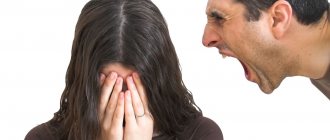Every year the exact sciences are developing more and more, and with them others are improving. Psychologists almost every day introduce new terms into human everyday life. Especially many words have the ending “phobia”. A phobia is a fear or apprehension, rejection or dislike of something. It turns out that people are not only afraid of heights or the dark, but also of things that seem illogical to be afraid of. For example, someone is genuinely scared by the number 13, people of other races, or representatives of gay people. A very popular question: “Homophobes - who are they?” What kind of people are these, what do they fear, avoid or do not welcome?
Etymology and semantics of the term
What does "homophobe" mean? It should be noted that this word is of Greek origin and literally means the following: “homo” is the same, and “phob” (Phobos) is fear of something. Consequently, people suffering from this “disease” show a negative reaction to any homosexual manifestations, no matter in what form.
American psychologist Georges Weinberg was able to give a one-word designation for this phenomenon in his book in the 70s. Since then, this term has been actively used by scientists in various fields of activity and scientific institutions in various documentation and literature.
Regardless of the true meaning of the word “homophobe,” it is most often used to define people who experience negative emotions towards representatives of gay people.
Why does a person become homophobic?
Hatred and hostility towards representatives of the so-called “non-traditional orientation” can arise both under the influence of this mental disorder and for completely other reasons.
Thus, quite often “homophobia” is part of the lower worldview and upbringing – traditional patriarchal, religious, criminal. A person hates homosexuals because he was taught from childhood that they are “wrong.” They say that due to the spread of homosexual relations in the country, fewer children are born, “pampered” young people cannot be good movers and warriors (the only occupations worthy of a “man,” according to criminals and other lumpen), they “serve the devil,” etc. d. Often the sexual side of the issue is practically not taken into account at all: such a lumpen homophobe has a lot of objects for hatred - university students, people of intellectual and creative work; This also includes men who wear glasses or have long hair, who have clean, neat clothes, as well as any man who is not in a hurry to “punch” his interlocutor in the face at the first opportunity and prefers a calm conversation. Homosexuals are included in this list only as one of the items.
At the same time, the lumpen homophobe is interested in the appearance of the potential “faggot.” Meanwhile, among gays and bisexuals there are relatively few men who have a “feminine” appearance and manners; a significant part of homosexual men (if not the majority) are emphatically courageous people with a pumped up body, developed muscles, stern facial features and “typically male” habits: they love football, go fishing, know how to fight, etc. And this It’s quite logical, because a man who wants to please another man will emphasize his “masculinity”, and he chooses his partners based on similar signs.
Lumpen-homophobes do not notice these “non-traditional” men. And there are those who know about their orientation, but get along well with them, because they look “like real men.” And vice versa - subtle, sensitive and pampered heterosexual men evoke wild anger in them, even if they are married, have children and may even have served in the army.
It is not for nothing that criminals were mentioned here. The procedure of “lowering” in places not so remote is widely known. The prisoner, who believes that he was treated unfairly and undeservedly, tries his best to erase the memory of this event from his head, which causes him to fly into a rage at the sight and mention of anything that reminds him of it. And if before this procedure a person was completely indifferent to homosexuals, then after it he becomes an ardent hater of them.
In general, the criminal-prison concept of homosexuality has been turned upside down. According to prison concepts, a homosexual is considered to be someone who has been “let down.” In reality, a homosexual is someone who is physically capable of having sexual intercourse with a person of the same sex; that is, in this situation, only the one who “lowers” turns out to be gay (a heterosexual, in principle, is not capable of this).
It is a common assertion that all homophobes are hidden homosexuals or those who were subjected to the aforementioned humiliating procedure “in the zone.” This is true, but only partially.
In some cases, this is indeed a phobia and is closely related to disorders such as claustrophobia, fear of the dark, fear of redheads, and even persecution mania. Let us assume that a person was raised in patriarchal traditions; at the same time, from childhood he was taught that only homosexuals listen to such and such music, only gays wear such and such clothes, and so on. Therefore, listening to such music and wearing such clothes is a shame, it is bad. A person begins to become terrified of looking “gay.” It also happens that there were already people with non-traditional orientation in the family, and a person who knows a little about genetics is afraid that the “deviation” will manifest itself in him.
In other cases, homophobic behavior is a manifestation of an obsessive desire to dominate.
Factors such as religiosity, general ignorance, and the desire to follow social norms play a significant role in the development of homophobia.
The line between rejection and homophobia
In fact, making a clear distinction between quiet rejection of homosexuals and open homophobia is difficult and even impossible. These states can flow into each other, take one form or another, or not manifest themselves at all.
It is believed that heterosexual individuals are not entirely comfortable with homosexual relationships. Girls kissing, guys hugging - “normal” society does not accept these relationships, since same-sex love does not produce offspring. It is reproduction that is one of the basic instincts that drives humanity forward along the road of development into the future. Since homosexual contacts do not allow one to become pregnant and give birth to a child, this means that this is an “incorrect relationship.”
Why is homophobia dangerous?
Being convinced of the correctness of your own position is not bad in itself. Problems arise if some force others to adjust their lives to their beliefs.
When an uncompromising group of people tries to limit the rights of another, appealing to certain abstract ideals, this is radicalism. Any manifestations of radicalism are dangerous for society, since they leave no chance for dialogue and peaceful coexistence.
Homophobia is no different in form from Nazism, racism or chauvinism.
Perhaps this is why in Switzerland homophobic attacks are legally recognized as Switzerland labels homophobia a criminal offense as a hate crime.
The logic of homophobia takes us back to a time when the moral aristocrats of the American South believed that owning black slaves was the natural order of things; when women were prohibited from voting or attending university; when one Austrian artist managed to convince an entire nation of his own greatness and the insignificance of others.
By giving homophobia the right to exist, we strengthen and spread a type of thinking based on hatred and rejection of the essence of other people.
Psychological aspects of homophobia
It is a well-known fact: some people are calm about the fact that people of the same sex can be attracted to each other, while others vehemently argue that this is impossible. Why is this and what's the catch? The question arises: “Homophobes – who are they? Are these people with secret desires masquerading as “normal” heterosexuals?”
There is a very interesting version - the more active and violent a homophobe behaves, the more he wants to divert attention from himself and seem “normal.” As Sigmund Freud wrote back in his time, every man is a latent homosexual. Perhaps this is what motivates people to behave belligerently and aggressively towards open same-sex love.
Homophobia as a special case of xenophobia and discrimination in Russia
Yes, it’s hard to argue with the fact that two men cannot calmly show their feelings for each other on the street in Russia, but heterosexual couples can, and no one will beat them for it. Of course, this is a problem, but it is rooted in the general atmosphere of rejection of non-standard models of life in our country.
The Russian people, of course, want to become tolerant in a European way, but something is stopping our people. As a result, we generally have little love for those who are different from the majority. Homosexuals, hipsters, informals of all stripes, and people with disabilities are lumped together. How the latter got on this list is a complete mystery, what are they to blame for? This is a rhetorical question.
Homosexuals complain that they are fired from their jobs under various pretexts when they officially declare their orientation. It seems that almost any person (a supporter of traditional views on morality) would do the same if an employee told him that he likes masochism or sadism. There is no prejudice against minorities here. For an ordinary citizen of the Russian Federation, homosexuality is a sexual deviation, the same as BDSM.
Moreover, if a member of a minority did not want public recognition of his sexual orientation, then he would work like that, and no one would fire him. But it’s more difficult for people with disabilities in Russia. Physical impairment is not so easy to hide and they are simply rejected at the interview stage. We are far from the idea of putting someone higher and someone lower on a discriminatory list. We just want to say that some titanic shifts are needed in the psychology of society in order to overcome the problem of both homophobia and discrimination in general. No one knows how long this will take. Of course, one thing is clear: without the development of education and enlightenment of the broad masses, nothing will change, and education, unfortunately, is currently being destroyed by all means.
Still, it’s time to draw some conclusions. We hope that from our article it became clear what “homophobe” means. We hope the reader also understands that this problem is terribly difficult, confusing, ambiguous, and there are no ready-made recipes.
Internal homophobia
It is impossible not to mention another type of homophobia, which is called internal.
It has not yet been established why men or women become adherents of same-sex relationships. You can blame childhood trauma, sexual abuse, fashion influences. However, millions of gays and lesbians surveyed admit that they had a completely normal childhood with loving parents and traditional entertainment. Why does a “failure in the program” occur and a person begins to be attracted to representatives of the same sex? This is a great mystery. Given the general excitement about the topic of homosexuality, many homosexuals feel disgusted by same-sex love. This is a very complex topic in psychology, the reason for which, of course, is public opinion. It is this that often shapes our attitudes towards certain phenomena, and therefore one of them is internal homophobia. A gay or lesbian does not admit to himself or the world his desires, but actively promotes normal heterosexual relationships. Such an atypical homophobe is very unhappy, since happiness is determined by a person’s ability to be who he is. These people constantly experience remorse, lower their self-esteem, and also live in fear of exposure.
How to cope with hemophobia
You need to learn to look your fear in the eye
Let's look at how to overcome the fear of blood, what you need to do for this.
- In a mild case, ordinary communication with a psychologist is enough, who helps to understand the true causes of fear and guides you to fight it. Particularly effective in this case is communication with loved ones who do not experience such fears.
- Practicing meditation and other spiritual practices. Allows you to rethink your spiritual values, relax, and relate more easily to everything that frightens you.
- If there is a moderate degree of hemophobia, then the hypnosuggestive method can be used. At an appointment with a psychotherapist, the patient receives unconscious instructions regarding the fight against his phobia.
- Psychoanalysis helps to understand the cause of fear, to make sure that fear is not as terrible as it seems and that it can be dealt with.
- Cognitive behavioral therapy. The essence of the process is repeated contact with blood, which allows you to reduce the feeling of fear with each subsequent session. Over time, there is a fading of experiences associated with the sight of this biological fluid.
- Group psychotherapy is especially applicable during the recovery period.
- You can cope with panic attacks by performing special exercises, the main purpose of which is to adapt and develop the ability to control yourself in the presence of a frightening situation:
- you need to try to tense the muscles of your body with maximum strength, when they are in good shape, try to move - the point is that during an attack there is usually a decrease in pressure, and the ability to start moving in a stupor will improve the blood circulation process, which will prevent fainting;
- when you feel the approach of panic, physical activity and vigorous exercise will come to the rescue;
- learning to control your breathing. To do this, you need to take a deep breath, hold your breath for a few seconds, after which you need to exhale vigorously. This sequence should be completed up to 10 times, then up to 20.
Drug therapy may be prescribed, since the long course of the pathology leads to asthenic disorders. In such situations, complex treatment cannot be avoided. This may include taking the following medications:
- neuroleptics - help compensate for feelings of anxiety and fear; in the initial stage they can be used as monotherapy;
- sleeping pills - prescribed when there are deviations in the sleep process, used as an aid in therapy;
- tranquilizers – in the presence of panic attacks in a pronounced form, when antipsychotics do not properly affect the patient’s body;
- Antidepressants are prescribed to prevent the development of depression.
Treatment should be carried out under the supervision of a doctor and strictly in accordance with his recommendations. Self-medication by taking medications uncontrolled and without taking into account the required dosage is unacceptable.
Now you know how to get rid of the fear of blood. A considerable number of people are horrified at the sight of this biological fluid. Remember that you can overcome any phobia. If you cannot cope with the problem on your own, do not be shy; you need to ask for help from a qualified specialist.
Stereotypes in the cultural perception of homophobia
It just so happened historically that there are regions that are more loyal and tolerant towards homosexuals. And there are countries that do not accept open manifestations of same-sex contacts even in today’s progressive times. To understand how things stand with homophobia in the modern world, think where same-sex marriage is legalized, and where feminine men can still be mocked and ridiculed.
It is believed that Western and European countries are very tolerant of homosexuality. Gays, lesbians, transvestites and bisexuals are not afraid and do not hide, but on the contrary, they hold gay pride parades and legitimize their relationships at the state level.
The Slavs, to this day, are recognized by world opinion as the greatest enemies of homosexuality. There is even such a concept - “Russian homophobes”, that is, people who treat same-sex contacts most aggressively and maliciously are meant. This is not at all accidental - our history has always condemned “sodomy”, and in tsarist times people were impaled for homosexuality.
At the same time, it is documented that in Ancient Greece and Rome, courageous warriors did not hesitate to show sympathy for their fellow craftsmen, and this in no way affected society’s attitude towards them. Many famous writers, musicians and artists openly admitted their bisexual or homosexual inclinations, and today openly gays and lesbians are super popular designers, directors, presenters and performers.
What does “homophobe” mean?
Homophobia - what is it? Translated from other Greek: ὁμός – similar, and φόβος – fear. Homophobia is a condition in which an irrational fear arises regarding homosexual thoughts, behavior, feelings, and people of non-traditional orientation. Who is a homophobe, signs:
- avoids contact with people of unconventional orientation;
- afraid to realize his homosexuality;
- seeks to participate in demonstrations against LGBT societies;
- speaks negatively about homosexuals using offensive language;
- expressed religiosity;
- rigidity and authoritarianism.
Causes of homophobia
Is homophobia a disease or not? The term is very similar to the name of the disease, but this is not so, and homophobes themselves do not realize that their condition somehow needs correction. Reasons why homophobia occurs:
- latent homosexuality;
- ignorance;
- adherence to strict social norms;
- religiosity.
Psychology of homophobia
Studying homophobia using psychoanalysis helps to identify the reason why a person developed this condition. Psychologists cannot always draw the line between a person’s usual negative attitude towards homosexuality as a phenomenon and real homophobia, and if the first is more related to morality and stable stereotypes of society, then homophobia is always a sudden fear, disgust and anxiety of discovering a homosexual nature in oneself. Homophobes are afraid of being gay.
Homophobia in psychiatry
There is no treatment for homophobia as a clinical symptom, and although homophobia refers to fears, it is rather a social phenomenon, ranking alongside racism and xenophobia, an irrational fear that arises from the sight of people “not like me” and is manifested by strong negative emotions: anger, disgust, contempt, accompanied by aggressive behavior of a homophobe.
Homophobia in countries around the world
Despite attempts to establish the most tolerant attitude towards homosexuals in the world, adherents of same-sex relationships are constantly attacked.
For example, 9 out of 10 gays in America openly say that they have heard insults directed at them, and a third admit that they have experienced physical violence from homophobes. Statistics also confirm that even at school age, children can hear up to 30 homophobic statements a day - from peers, teachers and adults.
Life is very difficult for homosexuals in Muslim countries, where there is real hunting and persecution of openly gays and lesbians. During bullying, gay people not only hear insults and threats, but can be severely beaten and even killed. Examples of such countries are Iraq and Iran.
Things are no better in Israel. The incident that occurred in 2005 at the gay pride parade is very well known to the world community. Then another rally was held on the streets of the city - a parade of opponents of gay people. They carried banners declaring that homosexuality is a disease and threw containers of feces and urine at gay pride supporters.
It turns out that homophobes are not so harmless. Who are these - not murderers and savages, ready to tear to pieces dissidents?
Homophobic states
There are a number of countries where the appearance of homophobic symbols provokes aggression among almost the entire population. It is better for gays, transgender people and lesbians not to visit such states, and if such a need arises, they need to behave and dress in such a way as not to incur “righteous” anger. Countries most dangerous for sexual minorities:
- Yemen;
- Iran;
- Uganda;
- Pakistan;
- Afghanistan.
- Georgia.
- Russia.
These are just a few, in fact we can
Homosexuality and homophobia on television
Since television has become our constant companions, best friends and news providers, public opinion has been shaped by shows, serials and advertising. Perhaps it was thanks to television that “normal” people around the world realized that there are so many homosexuals that it is better to accept them than to reject them. In addition, many popular idols do not hide their orientation and in fact turn out to be homosexuals. But there are no fewer opponents of same-sex love, open and hidden homophobes than there are supporters, and maybe even more. Books, films, and songs condemn same-sex attraction, promoting healthy relationships and procreation. In this case, homophobes - who are they? Are they really people fighting for the continuation of the human race on Earth?
History of use of the term
The predecessors of the term “homophobia” are homoerotophobia and homosexophobia. But the first mention of homophobia dates back to 1960. Gay activists Jack Nichols and Lee Clark called heterosexual men's fears and fears of being mistaken for homosexuals homophobia. In 1972, it was used by American psychiatrist John Weinberg in the text of his book “Society and the Healthy Homosexual” to mean the fear of contacts with homosexuals, as well as the negative attitude of people of this orientation towards themselves. Nowadays, the term “homophobia” is used more often for social and political purposes as a kind of tool, due to the large number of different definitions and meanings that are attached to this concept.
The modern concept of “homophobia” has a more complex definition and meaning.
Who and when coined the term
The term homophobia was first described in 1972 by George Weinberg. It was defined as an irrational fear, hatred and intolerance of intimacy with homosexual men and women. Homophobia in society now comes in many different forms. Less visible is the lack of inclusion of same-sex and especially ethnically diverse couples in entertainment, marketing materials and advertising. More obvious forms of homophobia include laws and regulations that discriminate against and undermine the basic human rights of lesbian, gay and bisexual people.
How homophobia developed
The history of the development of homophobia is closely connected with the history of homosexual manifestations. Thus, in ancient Rome, according to the biographies of the ancient Roman historian Suetonius (“The Life of the Twelve Caesars”), only 2 Caesars did not have connections with the male sex. Guy Julius Caesar was called the “Queen of Bithynia” for his bisexuality, but, in particular, for the fact that he had a relationship with the king of Bithynia.
Historians associate the beginning of homophobia with the emergence of religion on the territory of the Roman Empire, namely Judaism, and later Christianity. The basis of such prejudices was that sexual relations should occur solely for the purpose of procreation, and any same-sex intercourse was considered adultery. For example, Emperor Justinian passed a law in 538 that, regardless of sexual position, homosexuals were subject to the death penalty. This law was not the only one, and it was it that influenced the further development of homophobia in Europe. Europe only began abolishing penalties for homosexuality in the 20th century.
Homophobia has been developing for quite a long time. And this, indeed, is largely due to religious movements. In modern times, religion has faded into the background, while one gets the feeling that homophobia is only gaining momentum. The idea that same-sex relationships are impossible is so entrenched in people's minds that it causes strong dissonance and subsequently hatred.
Endless fight
The confrontation between different countries, cultures, and religions will last forever. People sometimes lack simple human understanding in order to decide for themselves - everyone in this world has the right to their opinion, their views and their choice. Homosexuality, whatever it is, is just another difference between people.
And there is no need to speculate whether it is a disease, a psychological deviation or a feature bestowed from above. Awareness is the best way out in this situation. Live, be happy, and don’t interfere with other people’s happiness, no matter who they are. Or joyfully stick the homophobic flag into your defeated “enemies,” exclaiming that you are fighting for the purity of a race or nation. But this struggle is no better than Hitler’s war against the Jews, just as senseless and bloody.
AIDS
Another common misconception is that AIDS is a gay disease. At first, it even had a different name - “immunodeficiency associated with homosexuality.” This is largely influenced by the lack of information and condemnation by the surrounding society. The fact is that after conducting more thorough research, scientists determined that infectivity with this virus is not related to orientation.
For example: in Russia, more than half of the cases of infection occurred through traditional heterosexual relationships, although members of the LGBT community are at risk and get sick more often.
Causes of hemophobia
On a subconscious level, red liquid is associated with war and death (these associations were inherited from distant ancestors).
Other causes of fear of blood (phobia) include:
- personal negative experience of receiving medical services;
- personal psychological trauma associated with physical damage or watching someone die or be injured;
- fear of infection;
- fear of fatal or serious illness.
Why are people afraid of blood?
- memories of a past unsuccessful test experience (feeling sick, dizzy, the doctor couldn’t get into a vein, the client fainted);
- memories from childhood in which the mother scolded the child for every abrasion are frightening;
- memories of an unpleasant incident in which a person experienced physical and mental pain, and where bloody liquid was present, are frightening;
- Memories of violence are frightening (both from personal experience and against the backdrop of news from the media or movie plots).
In women, fear of blood may be a reflection of non-acceptance of their sexuality and femininity. In teenage girls, this may be associated with a fear of growing up and further entering into close and intimate relationships.
Why do people faint at the sight of blood: this is the result of a sharp drop in blood pressure, which is caused by a sharp surge of adrenaline. This, in turn, occurs due to severe fear, stress, and tension. Thus, fainting is the result of anxiety and fear. But at the same time it becomes a cause of phobia. Become aware of this feature and stop being afraid of fainting.











